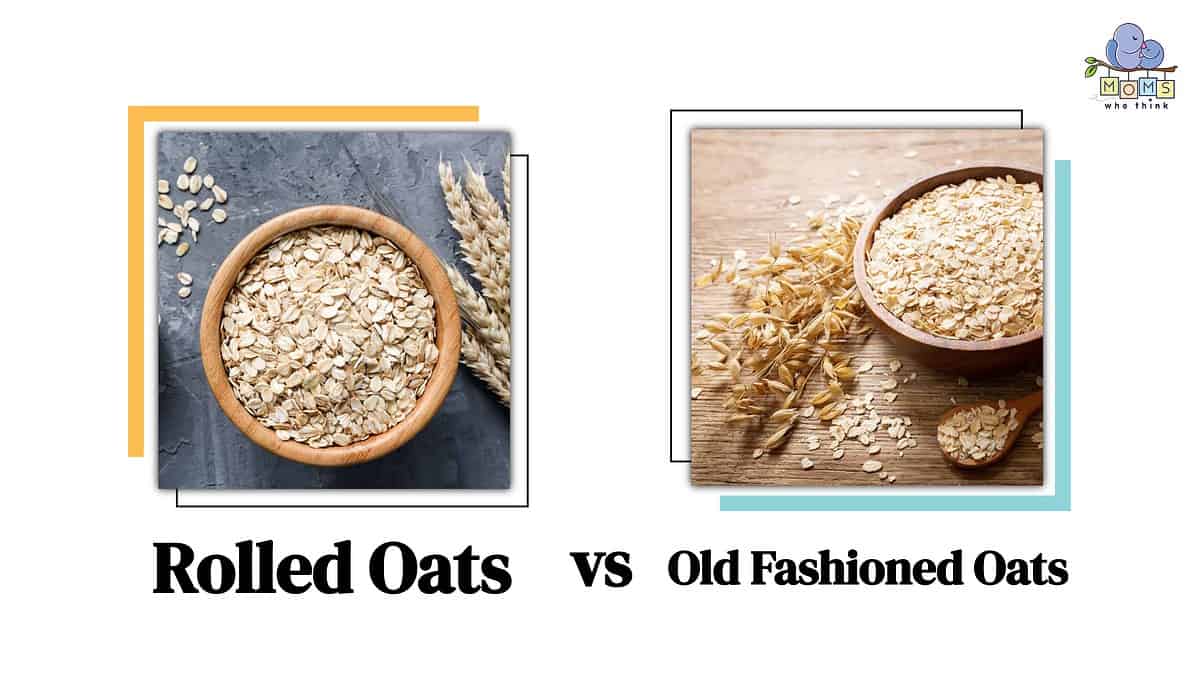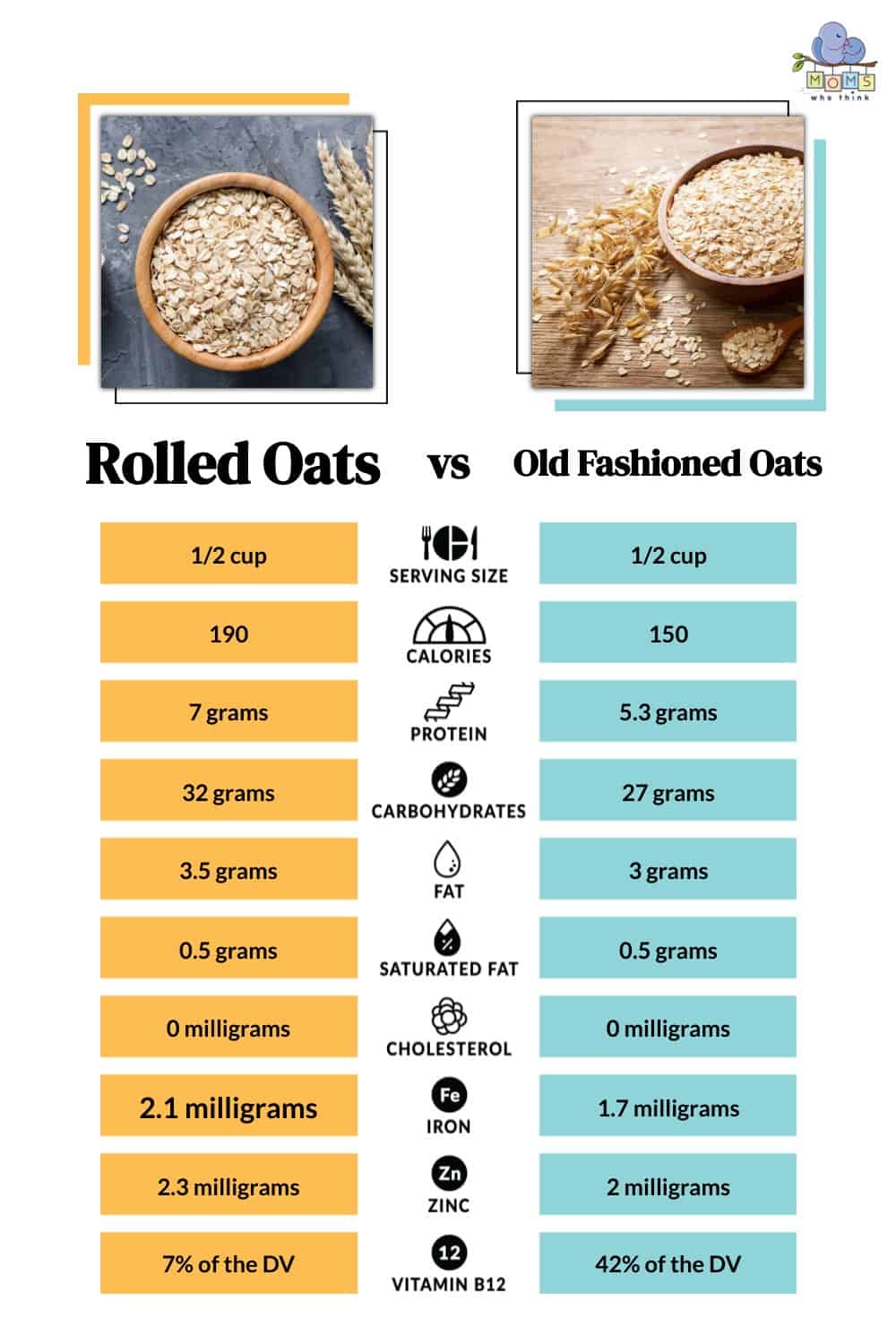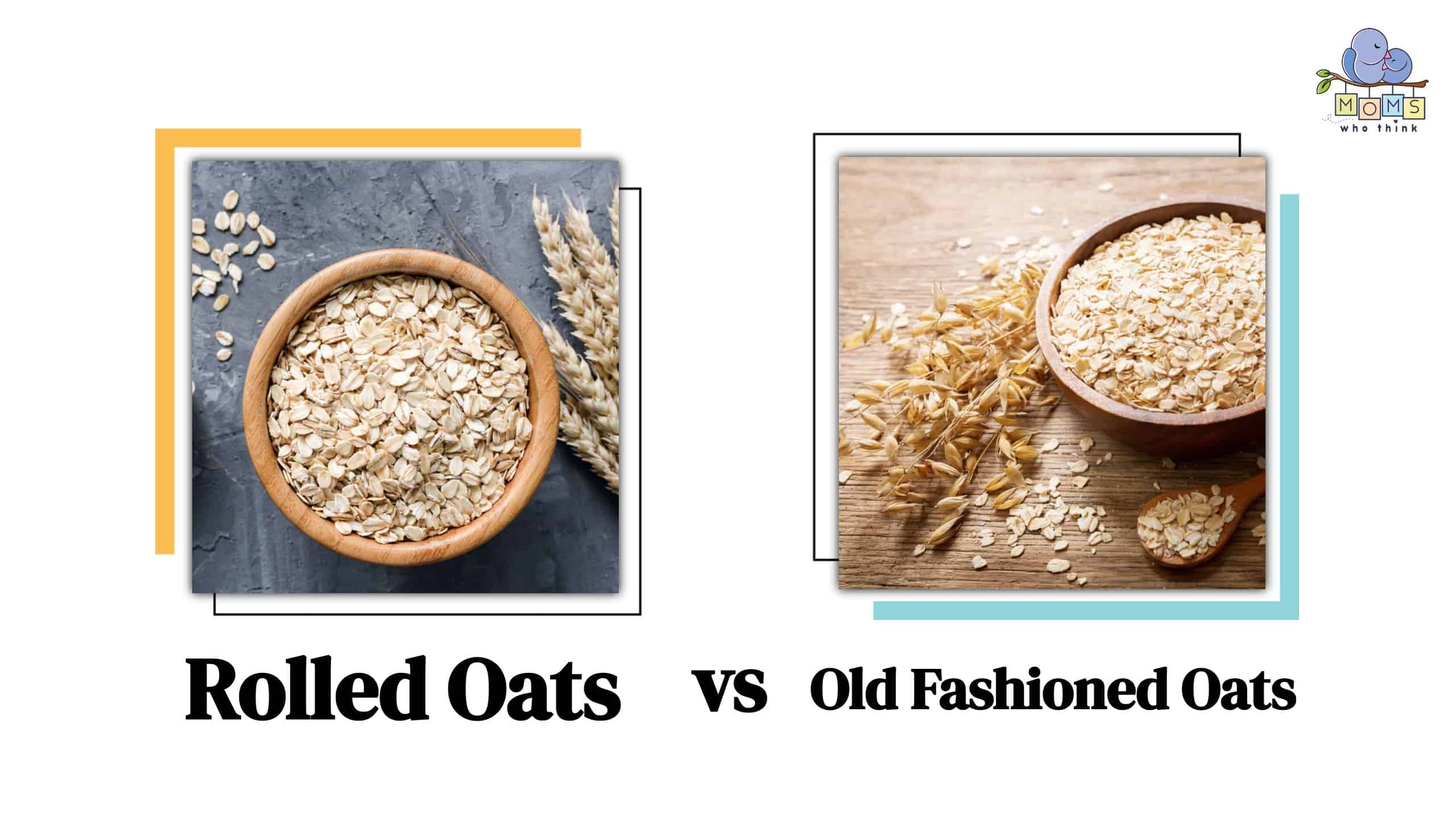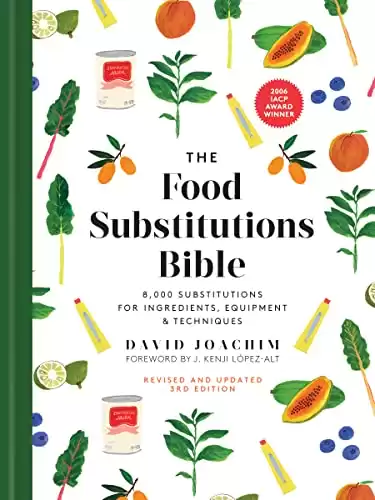Rolled oats vs. old-fashioned oats: What's the difference? While oats, in general, are healthy for you, they are also different when it comes to rolled oats, old-fashioned oats, quick oats, instant oats, and oat bran. When it comes to rolled oats and old-fashioned oats, you'll notice how different they are regarding history, nutrition, and recipes.
For example, rolled oats came out in the early 1900s. Rolled oats are whole oat groats that are rolled through a process. It involves flattening them into oak flakes. However, the history of old-fashioned oats goes back even further, dating back thousands of years.
This guide explores the unique differences between rolled oats and old-fashioned oats. We look at the unique history, the health benefits, and what recipes you can make with either one.
- The must-have convenient reference guide for every home cook!
- Includes more than 8,000 substitutions for ingredients, cookware, and techniques.
- Save time and money on by avoiding trips to grab that "missing" ingredient you don't really need.
What Are Rolled Oats vs. Old-Fashioned Oats?

The history of rolled oats begins in the early 1900s. The Nagel Brothers were the first to invent the process of rolling oats instead of steaming the oats. These brothers created a process that was eventually sold to the Quakers Company, the brand you may see in grocery stores today.
When it comes to old-fashioned oats, the history dates back years further. The Romans originally brought oats to England. By 1500, oats were a popular meal in many parts of European countries, like Ireland and Scotland. It wasn't until the 1900s that oatmeal became popular in the United States. Before that time, old-fashioned oatmeal was used for animal feed until it became a popular breakfast food.
Over time, old-fashioned oats and rolled oats became popular in people's diets. This is because of the nutrition found in both of them. It's also because you can cook a lot of different recipes with either one of them.
Which Is Healthier for You?

There are marginal health differences between rolled oats and old-fashioned oats. While they present different health benefits, many of them are the same.
As you can see from the chart, they have a lot of similarities. However, rolled oats have slightly more calories and protein. Additionally, since rolled oats are steamed and flattened, it reduces how it's processed compared to old-fashioned oats. Reducing how oats are processed increases the health benefits.
When it comes to the health benefits that rolled oats and old-fashioned oats provide, you'll notice that they are packed with many health benefits. They are an excellent source of fiber, which aids in digestion. Additionally, because they have polyphenols, they are a good source of antioxidants, boosting your immunity.
- The must-have convenient reference guide for every home cook!
- Includes more than 8,000 substitutions for ingredients, cookware, and techniques.
- Save time and money on by avoiding trips to grab that "missing" ingredient you don't really need.
Other benefits that rolled oats and old-fashioned oats share are lowering cholesterol and improving blood sugar. This is because of the beta-glucan fiber found in both oats, which helps improve overall health, specifically reducing cholesterol levels.
Another benefit to consider when you add either rolled oats or old-fashioned oats to your diet is how filling oats are as a food. Eating oats for breakfast helps you reduce how much food you eat because the beta-glucan gives you a feeling of fullness.
In summary, here is a list of the benefits both oats share.
- Reduce your cholesterol
- High amount of fiber
- Improve your blood sugar
- May help you lose weight
- May reduce childhood asthma
- Helps relieve constipation
What Can You Make With Either One?
Given all the health benefits of these oats, it's essential to recognize how they can benefit you with different recipes.
The number of recipes you can make with oats, from breakfast to dinner, shows you the various ways you can make it with rolled oats or old-fashioned oats. Of course, the health of every recipe depends on what other ingredients are added, like sugar, brown sugar, and butter. The key is to find recipes with the right nutritional value that helps you get the most out of oats.
Here's a list of the most nutritious recipes with rolled or old-fashioned oats.
- Brown Butter Oatmeal Muffins
- Healthier Carrot Oatmeal Cookies
- No-Bake Energy Bites
- Oatmeal Peanut Butter Cookies III
- Savory Oat Risotto
- Oatmeal Carmelitas
- Megan's Granola
- Oatmeal Pancakes II
- Scottish Oat Scones
- Savory Oatmeal Breakfast Casserole
- Sweet Potato Baked Oatmeal
- Honey Of An Oatmeal Bread
What's The Better Choice?
Choosing between rolled oats and old-fashioned oats is about preference. Old-fashioned oats are usually flat and flakey, and they absorb water quickly. They also taste nearly identical to rolled oats. However, there are marginal differences between them regarding recipes and nutritional value.
Trying both can give you a better idea of which one you like more. Trying them with different recipes can give you an idea of what you like more. It can give you an idea of why oatmeal is one of the most popular breakfasts in America.
- The must-have convenient reference guide for every home cook!
- Includes more than 8,000 substitutions for ingredients, cookware, and techniques.
- Save time and money on by avoiding trips to grab that "missing" ingredient you don't really need.

